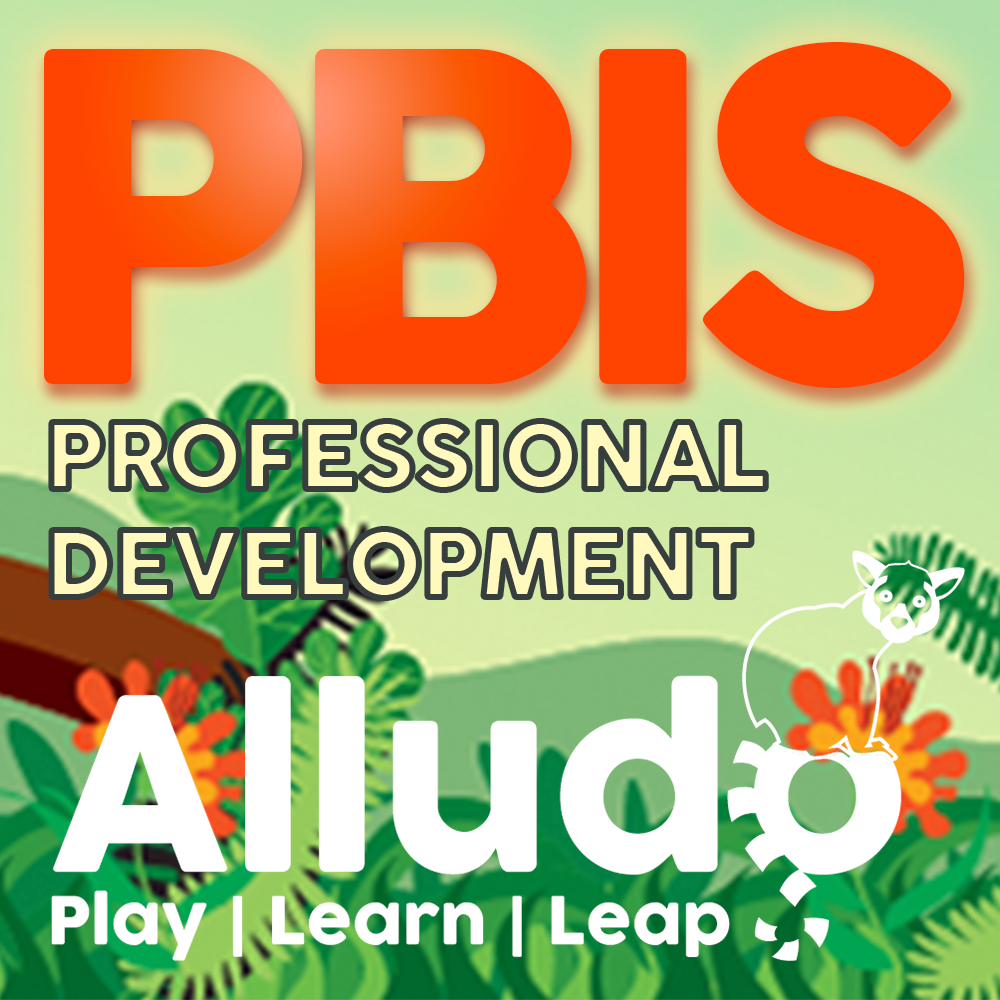Quick Tip Wednesday: Welcome back!
Hi!
Schools implement PBIS to make behavior management straightforward for both students and staff. Students understand behavior expectations, and staff are clear on how to address specific issues. When implemented successfully, PBIS takes the guesswork out of behavior management so that classtime can be spent on learning and teaching, rather than discipline. These systems mean that problem behaviors are dealt with early on, reducing suspensions and expulsions and keeping students in school where they belong.
We’ve got some great news for our Alludo districts — a new Alludo-authored game in the catalog! This time, we wanted to develop content that would help guide districts adopting or improving their PBIS approach. We’ve written more than fifty activities that take our users from A-Z:
Basics from the bottom of the PBIS pyramid to the top at Tier 3;
developing plans that effectively teach behavior expectations across all settings;
ways to identify problems, solutions and opportunities to implement a successful PBIS plan;
engaging parents and the community in the district’s PBIS strategy.

As with all of our games, learners are encouraged to complete these PBIS professional development activities at their own pace, on their own time. This way, teachers will have an opportunity to implement their learning and reflect on the experience before moving on to the next topic.
The game offers both hands-on and reflective activities, and goes deeper into the benefits of PBIS, namely how:
PBIS supports equity in disciplinary situations
Bullying can be reduced or eliminated with an effective PBIS plan
PBIS practices aim to support all students, and especially those with physical, cognitive or psychological impairments
Want more information on PBIS? Check out our PBIS blog post, or explore our other Alludo-authored professional development games for teachers: G Suite, Digital Citizenship, Microsoft Innovative Educator…and stay tuned for more highlights from our new games!
Sample activity from our PBIS game:
The multi-tiered PBIS “continuum” is comprised of carefully selected, evidence-based practices at three different levels of support intensity. Specific practices are matched both to the level of support need, and the local cultural context.
• Tier 1: Universal practices are experienced by all students and educators across all settings to establish a predictable, consistent, positive and safe climate
• Tier 2: Targeted practices are designed for groups of students who need more structure, feedback, instruction and support than Tier 1 alone
• Tier 3: Indicated practices are more intense and individualized to meet the challenges of students who need more than Tiers 1 and 2 alone
Review the resources below, then answer the following questions:
• In your own words, describe the purpose of the PBIS 3-Tiered System.
• Describe what student behavior might look like at each tier.
• How could you use the 3-tiered approach in your classroom?
 DESCRIBE: Answer the following questions:
DESCRIBE: Answer the following questions:
• In your own words, describe the purpose of the PBIS 3-Tiered System.
• Describe what student behavior might look like at each tier.
• How could you use the 3-tiered approach in your classroom?
PBIS Tier 1 Supports (also visit the Tier 2 & 3 pages located in the sidebar)
3 Tiered System
.png)
Welcome back to Quick Tip Wednesday!

Mid-Year Reflection: Your Secret to a Stronger Second Semester